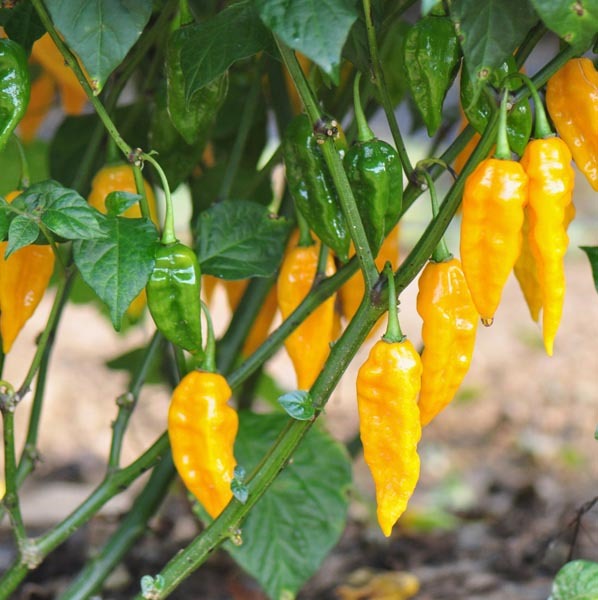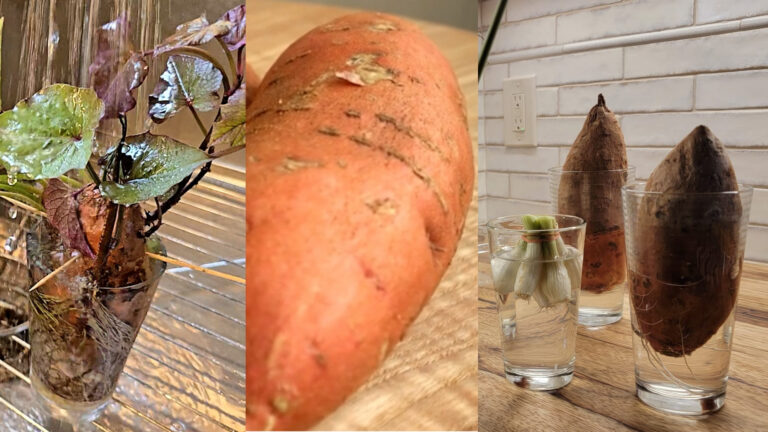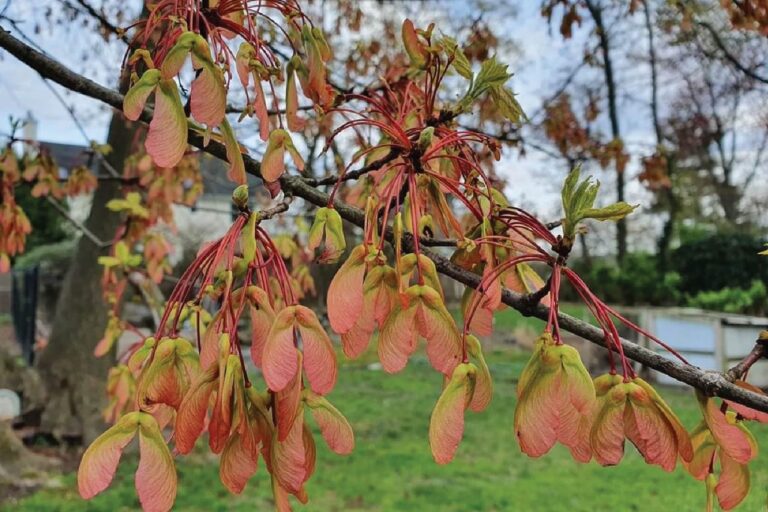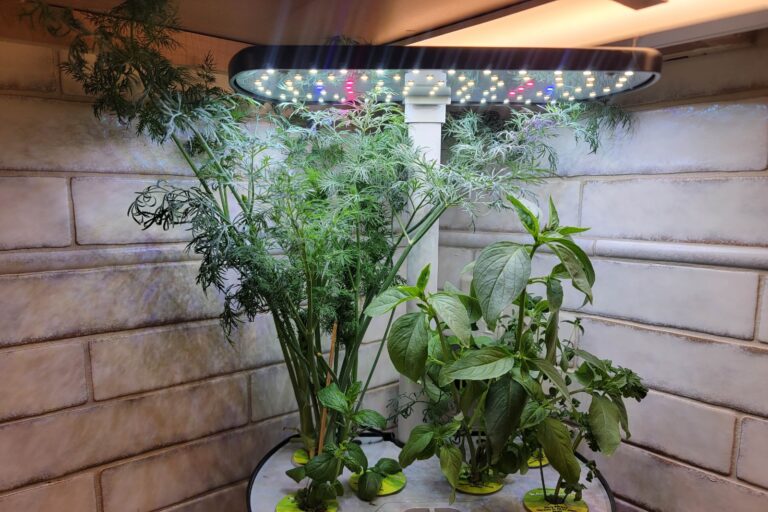Mad Hatter Pepper: 1 Unique and Versatile Treasure in the Backyards
Introduction
Mad Hatter pepper (Capsicum baccatum) is a unique pepper that has piqued the interest of gardeners, chefs, and chili fans alike due to its unusual shape, sweet flavor, and numerous culinary applications. Unlike many peppers noted for their extreme heat, the Mad Hatter chili has a unique blend of mild spiciness and fruity sweetness, making it a versatile component in the kitchen. The pepper’s attractive look and simplicity of growing make it popular among home gardeners and commercial farmers. In this blog, we will look at the unique elements of the Mad Hatter pepper, including its origins, plant structure, cultivation procedures, environmental preferences, and varieties that may be used in meals.
Origins and History of the Mad Hatter pepper

The Mad Hatter chili is part of the Capsicum baccatum species, which as most chilies originated in South America. These peppers are native to the Andes, where indigenous peoples have grown them for thousands of years. Capsicum baccatum peppers, often known as “Aji” peppers in their native countries, are well-known for their distinct flavor profiles and adaptability to a variety of growth situations.

While the Mad Hatter pepper is a relatively new addition to the pepper world, it finds its origins in an ancient lineage of South American chilies. The term “Mad Hatter” comes from the chili’s whimsical appearance, which is similar to the characteristic hat worn by the Mad Hatter character in Lewis Carroll’s Alice’s Adventures in Wonderland. This fun connotation has helped the chili acquire popularity, especially among gardeners who are drawn to its unique shape and mild flavor.
Appearance and Unique Morphology
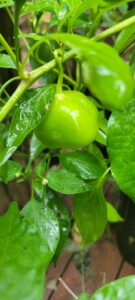
One of the most striking characteristics of the Mad Hatter chili is its odd shape. The pepper is flattened and wrinkled, with lobed edges that curl outward, resembling a hat or bell. Each fruit grows to be about 2 to 3 inches in diameter and is a glossy, vibrant green color while immature, turning a bright crimson or orange when ripe. The pepper’s distinctive form makes it an appealing addition to vegetable gardens and edible landscaping, providing both aesthetic value and gastronomic variety.
The plant is bushy, reaching heights of 3 to 4 feet, and has dense foliage that offers plenty of shade for the maturing fruit. The leaves are large and deep green, as is typical of the Capsicum baccatum species, and the plant flowers profusely before the fruit sets. The flowers are often white with a faint yellow or green tint, adding to the plant’s visual appeal.
Growing Conditions and Cultivation Tips
Gardeners interested in cultivating the Mad Hatter chile should be aware of the special environmental conditions that promote its growth. The Mad Hatter chili, like other Capsicum baccatum cultivars, grows well in warm, sunny, well-lit conditions. These peppers are quite easy to cultivate, making them an excellent choice for both new and seasoned gardeners.
Soil Requirements
Mad Hatter peppers prefer well-drained soil with a slightly acidic to neutral pH, usually between 6.0 and 7.0. To improve the fertility and structure of your soil before planting, include organic matter like compost or well-rotted manure. This guarantees that the plant receives critical nutrients throughout its growth cycle.
Temperature and Light

These peppers thrive in hot weather and require daytime temperatures ranging from 70°F to 85°F. Nighttime temperatures should preferably be above 55°F to avoid stunted growth or fruit destruction. Mad Hatter peppers require at least 6 to 8 hours of direct sunlight per day, so choose a sunny area in your garden.
Gardeners in colder climates should start seeds indoors about 8 to 10 weeks before the last projected frost date. Transplant the seedlings outside only after the threat of frost has passed and the earth has warmed up. In areas with shorter growing seasons, row covers or greenhouses might help to lengthen the growing season and guarantee that peppers mature properly.
Watering and Fertilization
Consistent watering is essential for healthy Mad Hatter pepper plants, as variable moisture levels can cause blossom-end rot or split fruits. The soil should be kept evenly moist but not waterlogged, as excessive moisture can promote root rot and fungal diseases. Mulching around the base of plants can help to maintain soil moisture and minimize the need for regular watering.
Mad hatter pepper plants require frequent fertilization to promote healthy growth and plentiful fruit production. Balanced fertilizer with nitrogen, phosphorus, and potassium is most effective. As the plants begin to flower and set fruit, switching to a fertilizer richer in phosphorus and potassium will help fruit growth.
Pollination and Fruit Development

One advantage of producing Mad Hatter chili peppers is that they self-pollinate. These plants can pollinate themselves, but they also benefit from the presence of pollinators such as bees, which can boost fruit set and overall yield. Once the flowers are pollinated, the fruit will begin to form, and the first peppers should mature between 70 to 90 days of planting, depending on the growing conditions.
Peppers usually ripen from green to red, although they can be harvested at any point of ripeness, depending on your desire. Green peppers are slightly tangier than fully matured red or orange peppers, which are sweeter and more complex.
Harvesting and Storage
Mad Hatter peppers are ready to harvest when they reach full size and turn a brilliant red or orange color. When harvesting, use scissors or pruning shears to remove the fruit from the plant while leaving a short stem attached to the pepper. This protects the plant and promotes fruit production throughout the growing season.
Mad Hatter chilies, after collected, can be kept in the refrigerator for up to two weeks. They can be frozen, dried, or pickled, depending on how you intend to utilize them. Freezing is an excellent way to preserve the peppers’ flavor and texture, whereas drying allows you to make chili flakes or powders that can be utilized in a variety of recipes.
Culinary Uses and Flavor Profile
The Mad Hatter pepper is regarded for its mild spice and sweet, fruity flavor, making it an ideal component for both savory and sweet meals. With a Scoville heat rating of 500 to 1,000 units, the pepper has a modest heat level, similar to a moderate bell pepper or banana pepper. This makes the Mad Hatter chili ideal for folks who like the flavor of chili peppers but prefer a milder intensity.
Fresh Uses
Mad Hatter peppers are best enjoyed fresh in salads, salsas, or as a crunchy topping for tacos and other foods. The pepper’s sweet, slightly acidic flavor complements fresh herbs, citrus, and other vegetables. For a simple salad, thinly slice the peppers and combine with tomatoes, onions, cilantro, and a splash of lime juice for a refreshing and colorful meal.
Grilling and Roasting

Mad Hatter peppers are also delicious when grilled or roasted, as these methods bring out their natural sweetness. To grill, spray the peppers with olive oil and set them on a hot grill until the skin is browned. Grilled Mad Hatter chilies can be used in sandwiches, pizzas, or made into a smokey salsa.
Roasting the peppers in the oven produces a deep, caramelized flavor. Roasted Mad Hatter chilies can be packed with cheese, rice, or meat to make a tasty appetizer, or blended into soups and sauces to give depth and complexity.
Pickling and Fermenting

Pickling or Fermenting Mad Hatter chilies is a popular approach to preserve their particular flavor for subsequent usage. The pickling proces reduces the pepper’s heat while keeping its crisp texture. Both Pickled or fermented Mad Hatter peppers are an excellent addition to sandwiches, burgers, and charcuterie boards, providing a sweet and tangy zing.
To pickle the peppers, slice them and place them in sterilized jars with vinegar, water, salt, and your preferred spices. After a few days of marinating, the peppers will be ready for consumption.

Stuffing and Baking
Mad Hatter chiles, with their bell-like form, are great for stuffing with a variety of fillings. Savory stuffed peppers can be made by stuffing them with cooked rice, beans, cheese, and seasonings and baking them till hot and bubbling. For an unusual appetizer or dessert, try stuffed peppers with a sweet filling, such as cream cheese blended with honey and chopped almonds.
Cultural and Ornamental Appeal
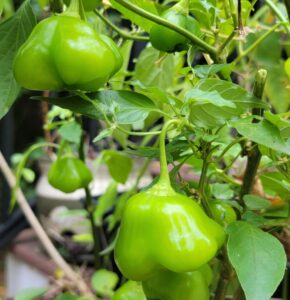
Aside from their culinary applications, Mad Hatter peppers have a unique place in gardens as attractive plants. Their eye-catching shape and brilliant color make them a visually appealing addition to any garden setting, whether grown in pots on a patio or as part of a larger vegetable garden. Their tiny size and bushy growth habit make them ideal for container planting, allowing those with limited room to enjoy the beauty and bounty of these peppers.
In addition to their aesthetic appeal, Mad Hatter peppers are excellent conversation starters. Their comical appearance typically piques interest, and their low heat makes them suitable for gardeners and chefs of all skill levels. Whether you’re growing them for their ornamental appeal, culinary potential, or simply to share with friends and family, the Mad Hatter pepper is a welcome addition to any garden.
Conclusion
The Mad Hatter chili is a unique pepper known for its distinctive shape, sweet mild flavor, and versatility in the kitchen. Whether you’re an experienced gardener or a newbie searching for a low-maintenance plant with great yields, the Mad Hatter pepper is a good choice. This pepper’s adaptability to varied growing settings, decorative attractiveness, and wide range of culinary uses ensure that it will continue to be popular among gardeners and chefs.


